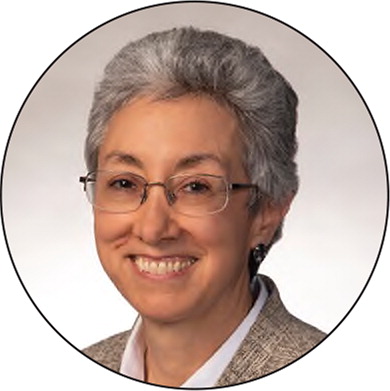
Am Fam Physician. 2020;102(12):758
Author disclosure: No relevant financial affiliations.

9:00 a.m.
I am not an early riser, so this is when my office hours begin. My third-year medical student is already examining our first patient. This month, my student has performed two knee injections, a suture placement after excision of a squamous cell carcinoma, his first venipuncture on a real person (me), and numerous flu shots.
9:30 a.m.
A patient donates 25 beautifully handmade masks. We will give these to patients who do not have their own. We see patients with COVID-19 symptoms in the parking lot. I have tested 200 people in all sorts of weather while wearing full personal protective equipment; 21 have tested positive. Three were college students, one of whom was a premed student set to take his MCAT exactly 14 days from the day he was tested.
10:15 a.m.
I perform a wellness exam on a 16-year-old football player. He has a leg length discrepancy because of a congenital posteromedial tibial bowing of his left leg. He had epiphysiodesis (surgical ablation of the growth plate on his longer leg to allow the shorter leg to catch up) on his right leg. He is now almost 5'11” and his final growth trajectory places him at 6'2”.
10:45 a.m.
A 50-year-old presents with an angry felon on his thumb. I see a small collection of pus on the finger pad and drain it. I show my premed medical assistants how I perform a digital block. The patient is a church musician, and I express concern for his ability to perform for livestream services. He assures me that he can improvise using only four fingers on that hand.
1:30 p.m.
A woman presents for a hypertension check. I examined her earlier this year after she was admitted to the hospital for congestive heart failure. She has several comorbidities, including atrial fibrillation, chronic obstructive pulmonary disease, and coronary artery disease. I remember that she was miserable, coughing, choking, and bitterly complaining that she could not swallow. She said her husband had similar symptoms starting one month before hers. I reviewed her hospital record and noted that she was negative for COVID-19, with a mildly elevated brain-type natriuretic peptide and a clear chest x-ray. Because her husband had similar symptoms, I decided that this must have been an infection, not congestive heart failure. I prescribed azithromycin and an antitussive, and performed a nasopharyngeal swab for pertussis, which came back positive the next day. Her family was treated with prophylactic azithromycin. Tdap is not covered by Medicare, so I have to educate older patients about the importance of this vaccination.
3:25 p.m.
I see a woman I am treating for anxiety. She is doing well on a low dose of buspirone, despite stressors related to the pandemic, including helping her children with virtual learning. She uses sumatriptan as abortive therapy for her migraines. Last year, I prescribed a very small dose of topiramate for migraine prophylaxis. After nine days, she developed severe blurry vision, so I referred her to an ophthalmologist who diagnosed acute angle-closure glaucoma caused by the topiramate. Her symptoms resolved once the medication was stopped. I wasn't aware of that possible side effect, and it makes me think twice when I am prescribing that medication.
4:45 p.m.
One of my favorite patients presents for a hospital follow-up. He has diabetes mellitus and severe coronary artery disease. On his way to a cardiology appointment, he fell in the parking lot and sustained a trimalleolar fracture of his right ankle. He visited the emergency department and was splinted. Before he could follow-up with the orthopedic surgeon, his foot turned blue, and when the splint was removed, his leg was ischemic to the knee. A thrombectomy was performed, but the leg became gangrenous, which resulted in an above-knee amputation. Today he is smartly dressed and has decided to have a positive attitude about losing his leg.
7:30 p.m.
After my husband and I arrive home, I take a walk around our farm while our dogs run through the hayfields. I close up the chicken coops and collect the eggs while I mull over the events of my day and the world in a time of COVID-19.
